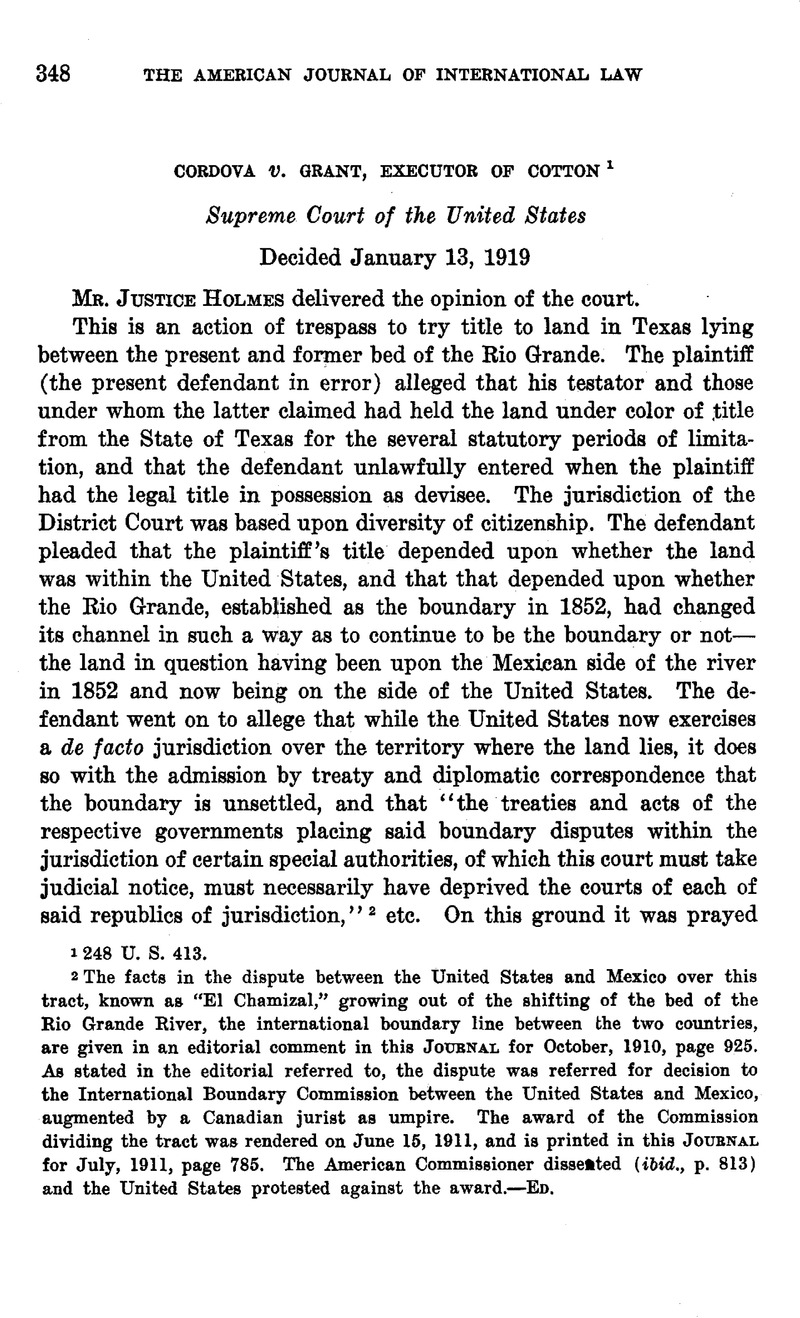Article contents
Cordova v. Grant, Executor of Cotton
Published online by Cambridge University Press: 04 May 2017
Abstract

- Type
- Judicial Decisions Involving Questions of International Law
- Information
- Copyright
- Copyright © American Society of International Law 1919
References
1 248 U. S. 413.
2 The facts in the dispute between the United States and Mexico over this tract, known as “El Chamizal,” growing out of the shifting of the bed of the Rio Grande River, the international boundary line between the two countries, are given in an editorial comment in this Journal for October, 1910, page 925. As stated in the editorial referred to, the dispute was referred for decision to the International Boundary Commission between the United States and Mexico, augmented by a Canadian jurist as umpire. The award of the Commission dividing the tract was rendered on June 15, 1911, and is printed in this Journal for July, 1911, page 785. The American Commissioner dissested (ibid., p. 813) and the United States protested against the award.—Ed.
1 On March 22, 1910, the United States Government proposed to the Mexican Government a modus vivendi, whereby, pending the settlement of the sovereignty of the Chamizal tract by the forthcoming arbitration, proceedings in ejectment cases against persons upon this tract claiming under Mexican titles should be postponed, pending an investigation by an officer of the United States to ascertain the facts of a prima facie Mexican title, and of actual possession under such title prior to March 15, 1910. If these facts were shown, the Government of the United States was to present to the court, through the United States Attorney, the diplomatic situation, and to request stay of proceedings, pending the outcome of the international arbitration under the treaty between the United States and Mexico of June 24, 1910. On June 9, 1910, this proposal was accepted by the Mexican Government, and pursuant to the agreement thus reached, Mr. Wilbur Keblinger, American Secretary of the International Boundary Commission, was appointed by the United States as the officer to pass upon the existence of prima facie Mexican titles and occupation under such titles.—Ed.
- 1
- Cited by


